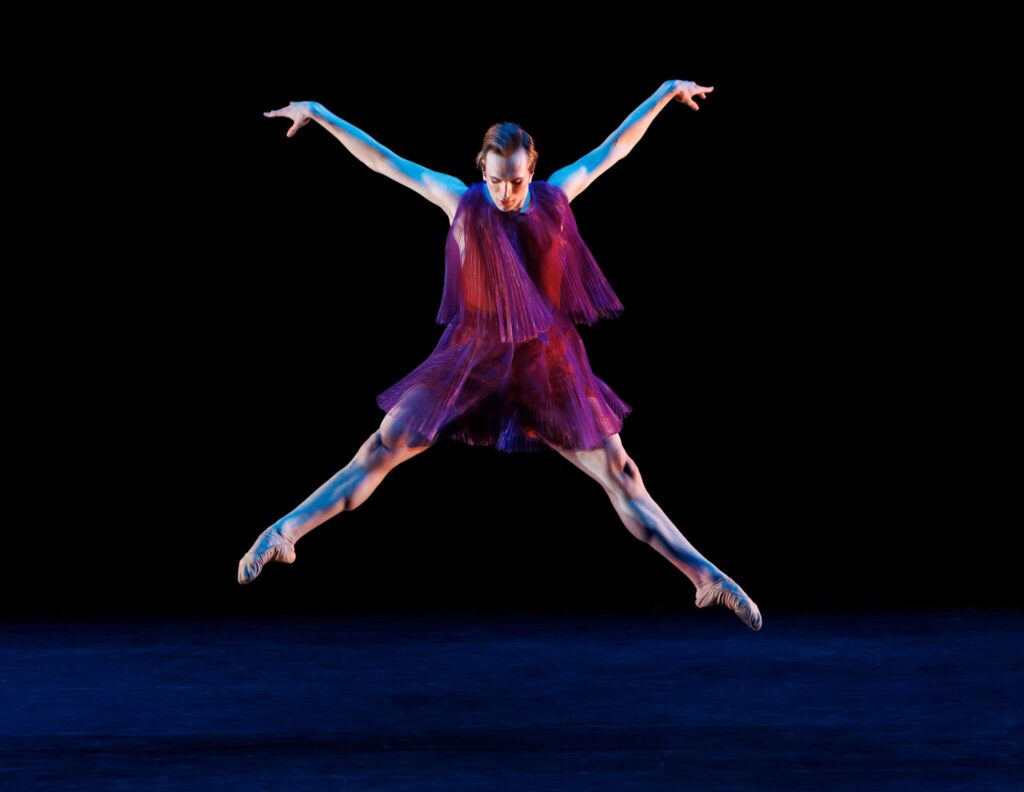THE HANGOVER REPORT – Flexing the boundaries of classical ballet: AMERICAN BALLET THEATRE unveils new works by Gemma Bond and Kyle Abraham
- By drediman
- October 18, 2024
- No Comments

This week, American Ballet Theatre commenced its fall season at the David H. Koch Theater. The opening program was an enticing one — performed under the umbrella banner of “Innovation Past and Present”, the evening featured the debut of two works and the return of an unconventional favorite. Collectively, the program seemed keen to flex the observed boundaries of classical ballet, which it largely succeeded at.
The evening began with the premiere of Gemma Bond’s La Boutique, a new ballet set to music from La Boutique Fantasque (arranged and orchestrated by Ottorino Respighi, after Gioachino Rossini), an all-but-forgotten 1919 story ballet. In her version, Bond has completely done away with the plot, instead focusing in displays of classical technique, albeit in a decidedly neo-classical package. In this respect, the ballet reminded me of another recent premiere in the same theater, Caili Quan’s Beneath the Tides for New York City Ballet. However, unlike that piece — which was marred by ponderous repetition and largely mechanical movement — Bond’s choreography exhibited invention and character, making for an ideal opener. The performance I attended was led by three couples — Isabella Boylston and Thomas Forster, Chloe Misseldine and Michael de la Nuez, and Breanne Granlund and Jake Roxander — individually comprising some of the more exciting dancers currently in the company; mostly, they lived up to the hype (although the red hot Roxander seemed a tad overeager in spots).
Then came another premiere, Kyle Abraham’s Mercurial Son. Set to a moody electronic score by Grischa Lichtenberger (and featuring equally moody lighting by Dan Scully), I found the piece to be a step forward for the sought-after choreographer, more cohesive and eschewing some of the thematic gimmickery and choppy mix-tape quality that have characterized some of his works. Design-wise, the ballet’s most striking aspect were Karen Young’s evocative costumes, which enhanced Abraham’s superb choreography — which, as always, seemed to live inside the music, instinctually shimmering across the stage with sensitivity and rhythmic confidence — while making an artistic statement all their own. As far as casting (which varies from performance to performance), Roxander — having fully settled down — once again showcased his unmatched expressivity and brilliant technique, while Melvin Lawovi captivated with an undaunted performance. Best of all was Calvin Royal III, who danced with the kind of freedom and grounded beauty that catapulted him to stardom within the company’s ranks. His closing solo was mesmerizing.
The evening concluded with the conceptually interesting but overlong Études, Harald Lander’s beloved 1948 tribute to traditional ballet exercises, which starts at the barre and ends with in large scale fashion with the entire company onstage. Capably leading the way were Devon Teuscher, Jarod Curley, and Andrew Robare, a regal trio that held my attention throughout this ultimately tedious ballet.
RECOMMENDED
AMERICAN BALLET THEATRE
Dance
David H. Koch Theater
Approximately 2 hours (with two intermissions)
ABT’s fall season continues through November 3

 Copyright © 2025
Copyright © 2025
Leave a Reply